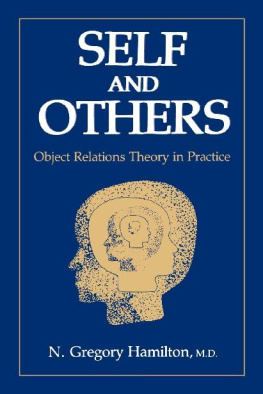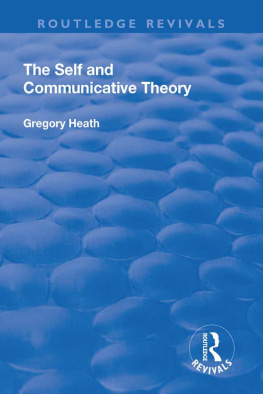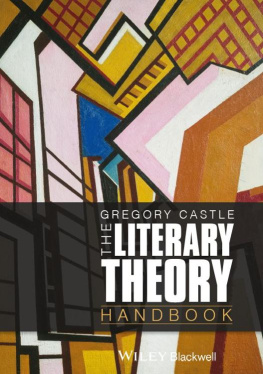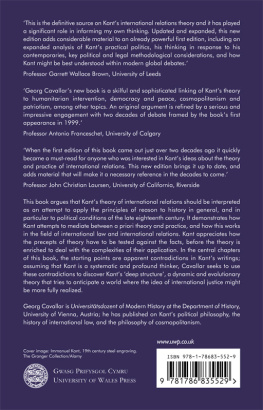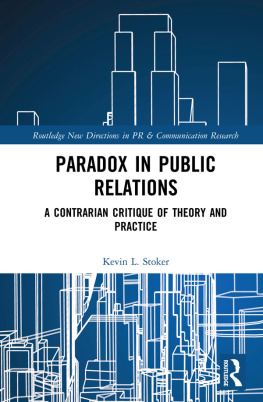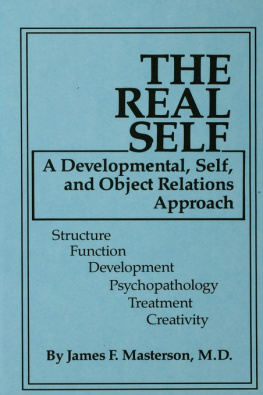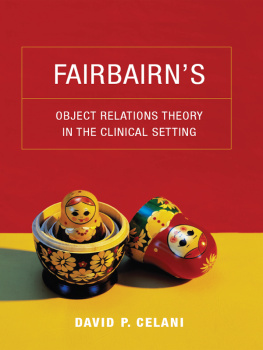N. Gregory Hamilton - Self and Others: Object Relations Theory in Practice
Here you can read online N. Gregory Hamilton - Self and Others: Object Relations Theory in Practice full text of the book (entire story) in english for free. Download pdf and epub, get meaning, cover and reviews about this ebook. year: 1999, publisher: Jason Aronson, genre: Religion. Description of the work, (preface) as well as reviews are available. Best literature library LitArk.com created for fans of good reading and offers a wide selection of genres:
Romance novel
Science fiction
Adventure
Detective
Science
History
Home and family
Prose
Art
Politics
Computer
Non-fiction
Religion
Business
Children
Humor
Choose a favorite category and find really read worthwhile books. Enjoy immersion in the world of imagination, feel the emotions of the characters or learn something new for yourself, make an fascinating discovery.
- Book:Self and Others: Object Relations Theory in Practice
- Author:
- Publisher:Jason Aronson
- Genre:
- Year:1999
- Rating:3 / 5
- Favourites:Add to favourites
- Your mark:
- 60
- 1
- 2
- 3
- 4
- 5
Self and Others: Object Relations Theory in Practice: summary, description and annotation
We offer to read an annotation, description, summary or preface (depends on what the author of the book "Self and Others: Object Relations Theory in Practice" wrote himself). If you haven't found the necessary information about the book — write in the comments, we will try to find it.
Self and Others: Object Relations Theory in Practice — read online for free the complete book (whole text) full work
Below is the text of the book, divided by pages. System saving the place of the last page read, allows you to conveniently read the book "Self and Others: Object Relations Theory in Practice" online for free, without having to search again every time where you left off. Put a bookmark, and you can go to the page where you finished reading at any time.
Font size:
Interval:
Bookmark:
SELF AND OTHERS
Object Relations Theory
in Practice
Object Relations Theory
in Practice
N. Gregory Hamilton, M.D.

The author gratefully acknowledges permission to reprint the following material:
Bulletin of the Menninger Clinic, Topeka, Kansas. Case description based on material in The Bulletin of the Menninger Clinic 50:323340.
Doubleday & Company, Inc., New York, New York, and A. P. Watt, Ltd., London, England. Quote from W. Somerset Maughams The Razors Edge, 1944.
Indiana University Press, Bloomington, Indiana. Quote from Rolfe Humphries translation of Ovids Metamorphoses, 1955.
Los Angeles TimesWashington Post News Service, Washington, D.C. Quote from Sundra Saperstein and Barbara Vobedjdas story as it appeared in The Oregonian, May 22, 1986.
Macmillan Publishing Company, New York, New York. Quote from W. B. Yeats Among School Children, 1927.
NAL, New York, New York. Quote from R. B. Blakneys translation of Lao Tzus The Way of Life: Tao Te Ching, 1955.
Random House, Inc., New York, New York. Quotes from William Faulkners Nobel Prize Speech, in The Faulkner Reader, 1954, and from E. L. Doctorows Willi, in Lives of the Poets, 1984.
A JASON ARONSON BOOK
ROWMAN & LITTLEFIELD PUBLISHERS, INC.
Published in the United States of America
by Rowman & Littlefield Publishers, Inc.
A wholly owned subsidiary of The Rowman & Littlefield Publishing Group, Inc.
4501 Forbes Boulevard, Suite 200, Lanham, Maryland 20706
www.rowmanlittlefield.com
PO Box 317
Oxford
OX2 9RU, UK
Copyright 1990, 1988 by Jason Aronson Inc.
First Rowman & Littlefield edition published in 2004
All rights reserved. No part of this publication may be reproduced, stored in a retrieval system, or transmitted in any form or by any means, electronic, mechanical, photocopying, recording, or otherwise, without the prior permission of the publisher.
Library of Congress Cataloging-in-Publication Data
Hamilton, N. Gregory
Self and others.
Bibliography: p. / Includes index.
1. Self. 2. Object relations (Psychoanalysis) 3. Psychology, Pathological. 4. Psychotherapy. I. Title. II. Title: Object relations theory in practice. [DNLM: 1. Ego. 2. Object Attachment. 3. Psychoanalytic Theory. WM460.5.02 H221s]
RC455.4.S42H34 1987 154.22 87-19479
ISBN 0-87668-544-0
ISBN: 978-0-87668-554-0
Printed in the United States of America
 The paper used in this publication meets the minimum requirements of American National Standard for Information SciencesPermanence of Paper for Printed Library Materials, ANSI/NISO Z39.48-1992.
The paper used in this publication meets the minimum requirements of American National Standard for Information SciencesPermanence of Paper for Printed Library Materials, ANSI/NISO Z39.48-1992.
FOR MY SONS
SAM, KURT, MIKE, AND ROB
PART I
SELF, OBJECT, AND EGO
PART II
DEVELOPING OBJECT RELATIONS
PART III
THE OBJECT RELATIONS CONTINUUM
PART IV
TREATMENT
PART V
BROADER CONTEXTS
ACKNOWLEDGMENTS
At its inception, this book was intended to be a translation of object relations theory into understandable English, one that does not water down concepts or sacrifice richness of thought. All students of selfother relationships, graduate analysts as well as those just beginning their mental health careers, have decried the difficulty of object relations literature. It was time for a new version.
Like most intellectual movements, object relations theory began as a series of arguments against viewpoints held by particular colleagues, or as an attempt to insinuate new ideas into the old framework of a then dominant group. These discussions had to use established technical words, sometimes with new meanings or even with shifting meanings. Therefore, the original language was cumbersome and confusing, though appropriate to the purpose and audience.
Recently, there has been such a widening interest in and acceptance of object relations ideas that increasing clarity is both possible and needed. The defensiveness of awkward wording is no longer in order. Jargon requiring knowledge of once prominent debates has become more hindrance than help. Yet I was hesitant to discard the original terminology entirely. I did not want this book to become a popularization. I hoped it could serve as both a translation for the contemporary therapist and a key to entering into and understanding existing literature. Such an approach required consolidation of ideas from numerous authors, comparison of viewpoints, and introduction of my own version of object relations. To make it understandable, yet compatible with earlier works, I shifted from abstraction to metaphor to clinical example to everyday life and back to abstractionthat is, back to the original theoretical terms. The book thus became a synthesis and transformation of ideas and observations, more than a translation.
Initial readers and classroom instructors have been thoughtful in expressing their appreciation of this approach. They have commented that it is understandable and has sufficient complexity. Consequently, many have requested that this printing take place without revision, which is gratifying indeed.
This is a fruitful and growing field, however. In one area, I have changed my position. More current infant research has demonstrated that Mahlers delineation of autism is untenable. Children can distinguish human from nonhuman stimuli from birth. They can even show preference for the specific individuals who care for them. They do seem to be object related from the very beginning, at least much of the time, as the early theorists Klein and Fairbairn suspected. And the timing of infant development is being revised even now. As for the rest of Self and Others: Object Relations Theory in Practice, I believe the ideas remain both current and useful.
I am grateful to Dr. Karl Menninger, who encouraged his students to observe their patients closely and write about them as clearly as they could, and to Dr. Donald Rinsley, who insisted that his students observe themselves as closely as they did their patients. Both these fine men died within the past year. Their many students continue to value and benefit from the guidance they gave. We carry their memories and influence within us.
I appreciate the help of my teachers, only a few of whom I can mention here: Drs. Herbert Woodcock, William Sack, Diane Schetky, Ann Applebaum, Samuel Bradshaw, Normund Wong, Diego Rodriguez, Jack Ross, Meredith Titus, Robert Obourn, Stuart Averill, Tetsuro Takahashi, Richard Roskos, Peter Novotny, and Jerome Katz. Ms. Jan Larson and Dr. Mary Cerney helped in my attempts to understand patients with psychoses. Members of the Training Committee of the Topeka Institute for Psychoanalysis, particularly Drs. Peter Hartocollis and Ramon Ganzarain, afforded me a valuable opportunity to learn and grow. Drs. Walter Menninger, Roy Menninger, Roland Atkinson, James Shore, and Joseph Bloom provided administrative support as I undertook this project.
Ms. Catherine Ponzoha read the manuscript on her own time and with her usual goodwill. She made numerous useful suggestions, both tactfully and incisively, always in the context of encouragement and support; I cannot thank her enough. My father, Dr. Norman K. Hamilton, helped with the first four chapters, as did Dr. Robert Frick. Ms. Joan Langs edited the entire manuscript, suggesting when warranted, challenging when necessary.
My students provided case examples, as well as useful criticisms and questions. They were patient as I discovered these ideas with them.
Next pageFont size:
Interval:
Bookmark:
Similar books «Self and Others: Object Relations Theory in Practice»
Look at similar books to Self and Others: Object Relations Theory in Practice. We have selected literature similar in name and meaning in the hope of providing readers with more options to find new, interesting, not yet read works.
Discussion, reviews of the book Self and Others: Object Relations Theory in Practice and just readers' own opinions. Leave your comments, write what you think about the work, its meaning or the main characters. Specify what exactly you liked and what you didn't like, and why you think so.

